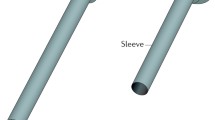Abstract
As tactile feedback and degree of freedom for instrument movement are restricted in laparoscopic surgery, the video image plays the most crucial role in giving the surgeon information about the performance of the operation. The development of small, reliable, high-resolution imaging systems is essential for the surgeon’s acquisition detailed information about the tissues being manipulated. Image quality depends on each component of the laparoscopic imaging unit. In this context, it is crucial for the surgeon to have an understanding of how the video signal is formed, transmitted, and displayed. Moreover, the surgeon also needs to have an idea about the basic principles and specifications of the surgical video systems (i.e. chargecoupled device (CCD) camera, monitors, and digitizers). This knowledge is essential for choosing pieces of equipment and knowing how to assemble them into a functional operating suite. The aim of this review is to provide the surgeon with the basics of video signaling, and to familiarize him or her with the technical principles of the surgical video systems. An insight into the future of laparoscopic video systems also is made, and practical tips for improving image quality and troubleshooting are given throughout the article.
Similar content being viewed by others
References
Berci G, Wren SM, Stain SC, Paz-Partlow M (1995) Individual assessment of visual perception by surgeons observing the same laparoscopic organs with various imaging systems. Surg Endosc 9: 967–973
Birkett DH (1993) 3D imaging in gastrointestinal laparoscopy. Surg Endosc 7: 556–557
Campbell FW, Gubisch RW (1966) Optical quality of the human eye. J Physiol 186: 558–578
Cartmill J, Aamodt D (1993) Video systems in laparoscopy. In: Graber JN, Schultz LS, Pietrafitta JJ, Hickok DF (eds) Laparoscopic abdominal surgery. McGraw Hill, New York, pp
Chan ACW, Chung SCS, Yim APC, Lau JYW, Ng EKW, Li AKC (1997) Comparison of two-dimensional vs three-dimensional camera systems in laparoscopic surgery. Surg Endosc 11: 438–440
Dion YM, Gaillard F (1997) Visual integration of data and basic motor skills under laparoscopy: influence of 2D and 3D video-camera systems. Surg Endosc 11: 995–1000
Evans B (1995) Understanding digital TV: the route to HDTV. The Institute of Electrical and Electronics Engineers, New York, pp
Farrel JE (1991) Fitting physical screen parameters to the human eye. In: Roufs JAJ (ed) The man-machine interface. CRC Press, Boca Raton, FL
Fuller PN (1996) Microendoscopic surgery: a comparison of four microendoscopes and a review of the literature. Am J Gynecol 174: 1757–1762
Geis WP (1996) Head-mounted video monitor for global visual access in mini-invasive surgery. Surg Endosc 10: 768–770
Griffin WP (1994) Three-dimensional imaging in endoscopic surgery. Proceedings of Association for the Advancement of Medical Instrumentation (AAMI), 29th Annual Meeting and Exposition. Washington, DC, AAMI, 23: 41
Grob B (1984) Basic television and video systems. 5th ed. McGraw Hill, New York, pp
Indman PD (1992) Instruments and video cameras for operative hysteroscopy. Clin Obstet Gynecol 35: 211–225
Klein SA, Carney T (1990) How many bits/m2 are needed for the perfect display? SID Digest 21: 456–459
Lange T (1993) State of the art technique for endoscopic surgery. End Surg 1: 29–35
Mathoas H, Paterson R (1985) Electronic cinematography. Wadsworth, Belmont, CA, pp
Mc Dougall EM, Soble JJ, Wolf JS, Nakada SY, Elashry OM, Clayman RV, (1996) Comparison of three-dimensional and two-dimensional laparoscopic video systems. J Endourology 10: 371–374
Morgan MJ (1991) Hyperacuity. In: Regan D (ed) Spatial vision. CRC Press, Boca Raton, FL, pp
Prentiss S (1994) HDTV: high-definition television. 2nd ed. TAB books, Blue Ridge Summit, PA, pp 162
Price RR (1993) Image manipulation. In: Wells PNT, Hendee WR (eds) The perception of visual information. Springer Verlag, New York, pp 318–333
Sanfilippo JS, Indman PD (1995) Photo documentation. In: Vitale GC, Sanfilippo JS, Perissat J (eds) Laparoscopic surgery: an atlas for general surgeons. JB Lippincott, Philadelphia, pp
Schwaitzberg SD (1995) Use of microlaparoscopy in diagnosctic procedures: a case report. Surg Laparosc Endosc 5: 407–409
Sippl CJ, Dah F (1981) Video-computers. Prentice-Hall, Englewood Cliffs, NJ, pp
Surgical video systems used in laparoscopy (1995) Health Devices 24: 28–33
Talamini MA, Gadacz TR (1991) Laparoscopic equipment and instrucmentation. In: Zucker KA (ed) Surgical laparoscopy. Quality Medical Publishing, St. Louis, pp
Tendick F, Bhoyrul S, Way LW (1997) Comparison of laparosopic imaging systems and conditions using a knot-tying task. Comput Aided Surg 2: 24–33
Utz P (1984) Do-it-yourself video: a beginner’s guide. Prentice-Hall, Englewood Cliffs, NJ, pp 27–29
van Bergen P, Kunert W, Schurr W, Buess GF (1996) Comparative study of endoscopic 2D and 3D imaging systems. Langenbeckss Archiv fur Chirurgie 113: 634–637
Author information
Authors and Affiliations
Additional information
Online publication: 2 May 2001
Rights and permissions
About this article
Cite this article
Berber, E., Siperstein, A.E. Understanding and optimizing laparoscopic videosystems. Surg Endosc 15, 781–787 (2001). https://doi.org/10.1007/s004640000391
Received:
Accepted:
Issue Date:
DOI: https://doi.org/10.1007/s004640000391



